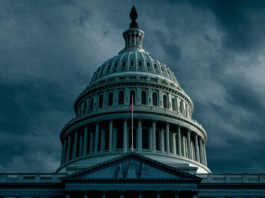The Genesis of a New Conservative Voice
In the years following the 2008 election, American college campuses were widely seen as hubs of progressive thought and activism. This perception created a distinct void. While liberal student groups were well-established and visible, organized conservative outreach to students often felt fragmented or absent. This environment set the stage for a new kind of political entrepreneur to emerge, one who saw an opportunity where others saw an ideological stronghold.
Identifying a Generational Gap
For many young conservatives on campus during the early 2010s, the political landscape felt isolating. The dominant campus culture often left them feeling like a silent minority, hesitant to voice their opinions in classrooms or public squares. This was not merely a political disagreement but a social one. The lack of a cohesive community or a unifying voice meant that conservative-leaning students had few outlets to connect, organize, or feel a sense of shared identity. It was this generational gap that Charlie Kirk identified as a strategic opening.
The Founding Vision of Turning Point USA
At just 18 years old, an age when most are focused on their own studies, Charlie Kirk began building what would become Turning Point USA (TPUSA). As reported by NPR, he founded the organization with a clear and accessible message tailored for young people: fiscal responsibility, free markets, and limited government. The initial vision was not overtly confrontational. Instead, it focused on core economic principles that could serve as an entry point for students curious about conservative ideas, offering a straightforward alternative to the prevailing campus dialogue.
Securing the Foundation: Early Funding and Strategy
An idea alone is not enough to build a national movement. Kirk’s early and crucial success was his ability to secure significant funding from established conservative donors. This financial backing was essential, transforming TPUSA from a concept into a rapidly growing organization with a national footprint. The strategy was clear: use this capital to establish chapters on college campuses across the country, providing resources, materials, and a sense of legitimacy. This gave young conservatives more than just talking points; it offered them a counter-cultural identity and a tangible sense of purpose in an environment they felt was hostile to their views.
Mastering Media and Campus Mobilization
With a foundational structure in place, the next phase of TPUSA’s growth depended on mastering the art of mobilization. This was not achieved through quiet debate but through a sophisticated and often provocative fusion of digital media and on-the-ground activism. The focus shifted from simply existing on campus to actively shaping the conversation, and Kirk proved exceptionally skilled at commanding attention in a crowded media environment.
Building a Multimedia Brand
Charlie Kirk understood that modern political influence is built through direct communication. He cultivated a powerful personal brand across multiple platforms, including podcasts, social media, and frequent television appearances. This multimedia approach allowed him to bypass traditional media gatekeepers and speak directly to a growing audience of young followers. His consistent presence created a direct and personal connection, making him a relatable and authoritative voice for his base. This digital-first strategy was central to the Turning Point USA impact on a national scale.
Provocation as a Campus Strategy
TPUSA’s campus activities were often designed to generate debate and media coverage through provocation. The goal was not always persuasion but disruption. This confrontational style frequently led to tense situations, which is not entirely dissimilar to other politically charged events, such as when a preacher in California was confronted by an activist during a public sermon. Key tactics included:
- Hosting high-profile, often controversial, speakers to draw large crowds and inevitable media scrutiny.
- Utilizing social media to amplify campus events in real time, turning local confrontations into national online debates.
- Creating initiatives like the “Professor Watchlist” to directly challenge what they termed liberal bias in academia, a move guaranteed to spark outrage and attention.
- Staging public demonstrations and tabling events designed to provoke reactions, creating viral moments that fueled their online content machine.
Crafting a Cohesive Conservative Ecosystem
Beyond the campus battles, TPUSA built a complete ecosystem for its members. Large-scale national conferences and summits became signature events, offering more than just political speeches. These gatherings served as crucial social and professional networking opportunities, fostering a powerful sense of belonging among thousands of young conservatives. They could meet like-minded peers, connect with established figures in conservative media and politics, and feel part of a larger, ascendant movement. This strategy strengthened ideological commitment and created a talent pipeline for the future.
| Tactic | Primary Objective | Intended Outcome |
|---|---|---|
| High-Profile Speaker Events | Generate media attention and energize the base | Large turnouts, campus-wide debate, and content for social media |
| Social Media Campaigns | Bypass traditional media and directly engage youth | Viral moments, rapid dissemination of messaging, and community building |
| National Conferences & Summits | Foster a sense of community and professional networking | Strengthened ideological commitment and creation of a talent pipeline |
| Provocative Campus Activism | Challenge perceived progressive dominance | Establish a visible conservative presence and force public confrontation |
From Activism to Electoral Influence
As Turning Point USA’s network expanded, its ambitions evolved beyond campus culture wars. The organization began to translate its significant following and organizational infrastructure into tangible political power. This pivot marked a critical shift from influencing conversations to influencing election outcomes, solidifying Kirk’s position as a significant player within the Republican party.
Pivoting to Get-Out-the-Vote (GOTV) Initiatives
Leveraging its extensive network of campus chapters and a massive digital audience, TPUSA launched large-scale get-out-the-vote (GOTV) initiatives. These campaigns were a natural extension of its mobilization efforts, aimed specifically at turning out young voters in key elections. By activating its base, the organization demonstrated it could do more than just host events; it could deliver votes. This move signaled a new level of strategic maturity for the movement.
Impact on the 2024 Election Cycle
The effectiveness of this strategy became particularly evident during the 2024 election. According to an analysis by ABC News, Charlie Kirk’s influence with younger voters was an instrumental factor in helping Donald Trump’s campaign by energizing this key demographic. TPUSA’s targeted mobilization in critical districts provided a measurable boost, proving that its brand of Gen Z political activism could have a decisive impact on electoral results. This success cemented Kirk’s standing as a valuable asset to the national Republican apparatus.
The MAGA Alignment and a New Generation of Voters
A crucial element of Kirk’s rising influence was his strategic alignment with the MAGA movement. This close association with political figures like Donald Trump was central to his later success. By embracing a populist, anti-establishment message, Kirk energized a new generation of voters who felt disconnected from traditional party politics. This alignment helped shape the future of the Republican party by infusing it with a younger, more combative base. Furthermore, TPUSA became a de facto talent pipeline, funneling its most dedicated young activists into careers in conservative politics, media, and advocacy, ensuring its influence would persist for years to come.
The Divisive Rhetoric and Polarization
While Charlie Kirk’s methods proved effective in mobilizing a base, they also drew significant criticism. A complete American political analysis of his impact requires examining the accusations that his confrontational style has contributed to political polarization. This section provides a balanced look at the controversies and the long-term consequences of his uncompromising approach.
Accusations of Increased Polarization
Critics frequently argue that TPUSA’s strategy of provocation has fueled division on college campuses and in the national discourse. By framing political differences as a battle between “us” and “them,” the organization’s rhetoric often prioritized conflict over dialogue. This brand of confrontational politics reflects a broader trend where, as seen in other recent political spats, sharp rhetoric often overshadows policy debate. The result, according to this view, is an environment where ideological silos are reinforced and common ground becomes harder to find.
Uncompromising Stances on Social Issues
A key part of Kirk’s appeal to his base—and a major point of contention for his opponents—has been his firm and uncompromising stances on contentious social issues. These positions energized his followers but alienated many others, deepening cultural divides. Three areas stand out in particular:
- Gun Rights: An absolutist defense of the Second Amendment that consistently opposed nearly all forms of gun control legislation, regardless of public sentiment after mass casualty events.
- Abortion: A staunch pro-life position advocating for significant restrictions or outright bans on abortion, a stance that places him at the forefront of one of America’s most polarizing debates.
- Transgender Rights: Vocal opposition to policies supporting transgender identities in schools, sports, and healthcare. This became a central and recurring theme in his culture war messaging.
The Long-Term Consequences for Political Discourse
The long-term impact of this polarizing strategy remains a subject of intense debate. While undeniably successful for mobilization and fundraising, there is a compelling argument that it has come at a cost. By normalizing confrontational tactics and absolutist positions, this approach may have damaged the potential for cross-partisan dialogue. When the primary goal is to win a culture war rather than to solve a policy problem, the space for compromise and mutual understanding shrinks, potentially leading to a more fractured and less functional political landscape.
Assessing a Contested Political Legacy
Evaluating the Charlie Kirk legacy requires acknowledging its dual nature. To his supporters, he is a visionary who built one of the most effective conservative youth movements in modern history. To his critics, he is a divisive figure whose rhetoric has deepened political polarization. His career offers a definitive case study in the power of personal branding, media mastery, and grassroots mobilization in a fragmented and partisan era.
There is no denying Kirk’s success in making conservatism appealing to a new generation. He identified a gap on college campuses and filled it with a well-funded, highly visible, and unapologetically combative organization. The Turning Point USA impact is visible not just in campus debates but in election results and the changing composition of the Republican base. He gave a voice and a community to young conservatives who felt overlooked.
The central question now is about the future. Can TPUSA maintain its influence without its charismatic founder at the helm indefinitely? As the movement matures, will its tactics evolve, or will it continue to rely on the confrontational style that brought it to prominence? Kirk has undeniably shaped the conversation around Gen Z political activism and the future of the Republican party. Whether his legacy will be one of lasting political realignment or of heightened partisan division is a question that will be answered in the years to come. For readers interested in ongoing coverage of American politics and the figures who shape it, Like A Boss continues to provide timely analysis.






